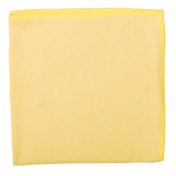Garbage bags have become an indispensable part of our everyday lives. They help us to dispose of waste efficiently and hygienically. But when it comes to choosing the right garbage bag, many come across the mysterious measurement "my" or "µ". What does that mean and why is it important? In this blog post, we explain and give tips on what you should look out for when buying garbage bags.
✔ What does "my" (µ) mean?
"my" or "µ" is a unit of measurement for the thickness of a material and stands for micrometers. One micrometer corresponds to a thousandth of a millimeter (0.001 mm). The thickness of a garbage bag is an important indicator of its tear resistance and resilience. The thicker the garbage bag, the more robust and resilient it is.
✔ Why is thickness important?
The thickness of a garbage bag determines its stability and load-bearing capacity. Thinner garbage bags are more suitable for lighter waste, while thicker bags can easily hold heavy and sharp objects. Here are some general guidelines:
- 15-30 µ: These thin garbage bags are ideal for light waste such as paper, packaging and kitchen waste.
- 30-60 µ: Medium-thickness garbage bags are ideal for household use and can also hold heavier waste such as food scraps and empty bottles.
- 60-120 µ: These thicker bags are intended for use in commerce and industry. They are particularly tear-resistant and can safely hold heavy, sharp-edged or pointed waste.
✔ Areas of application and tips for selection
Light household waste: For everyday kitchen and bathroom waste, garbage bags with a thickness of 15-30 µ are sufficient. These bags are cost-effective and more environmentally friendly as they use less material.
Heavy waste: If you want to dispose of garden waste, glass or other heavy materials, you should choose garbage bags with a thickness of at least 60 µ. These bags provide the necessary stability and prevent tearing.
Construction and renovation waste: For construction and renovation waste, which is often bulky and heavy, garbage bags with a thickness of 120 µ or more should be used. These bags can withstand sharp objects and ensure safe disposal.
Special requirements: There are also garbage bags with special properties, such as biodegradable garbage bags or bags with fragrances that neutralize unpleasant odors. Look for such additional properties if they are relevant to your needs.
✔ Conclusion
The thickness of a garbage bag, measured in micrometers (µ), is a decisive factor in its resilience and tear resistance. Depending on the type and amount of waste to be disposed of, you should choose the appropriate thickness to ensure safe and hygienic disposal. When making your selection, also consider special requirements and additional properties that might meet your needs.
With this knowledge, you are well equipped to select the right garbage bag for each type of waste and thus ensure efficient and clean disposal.




